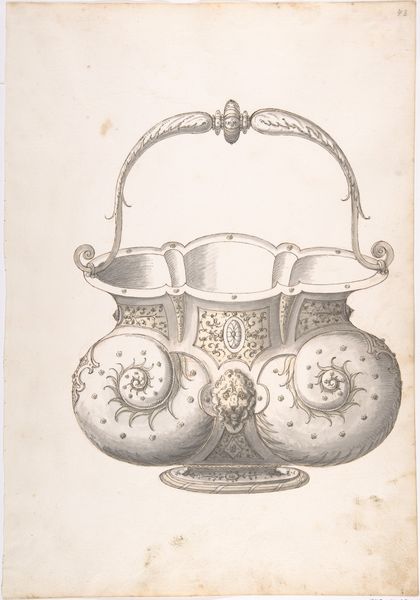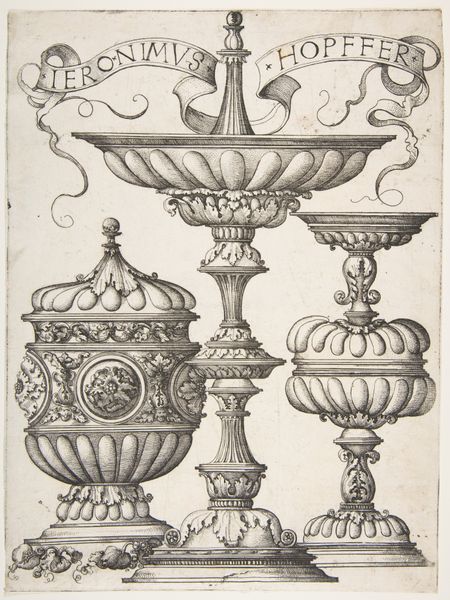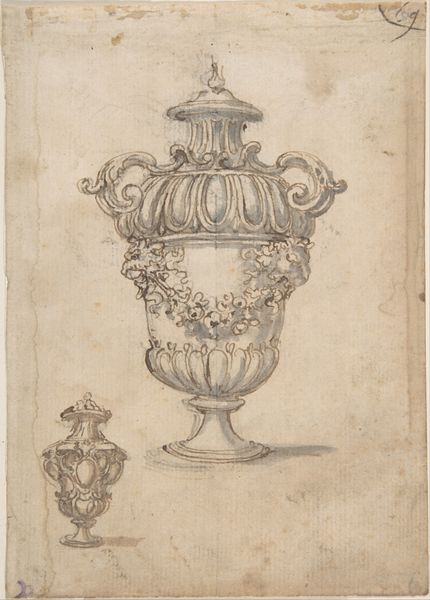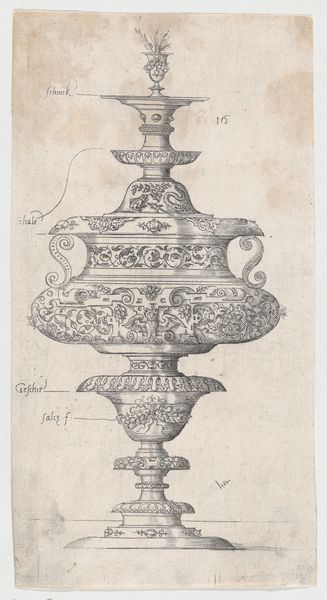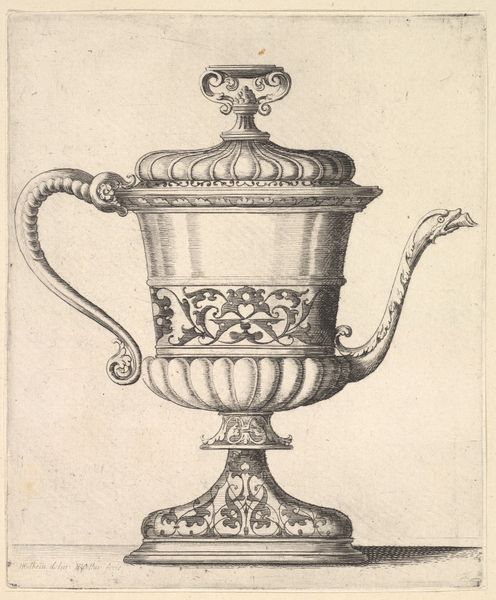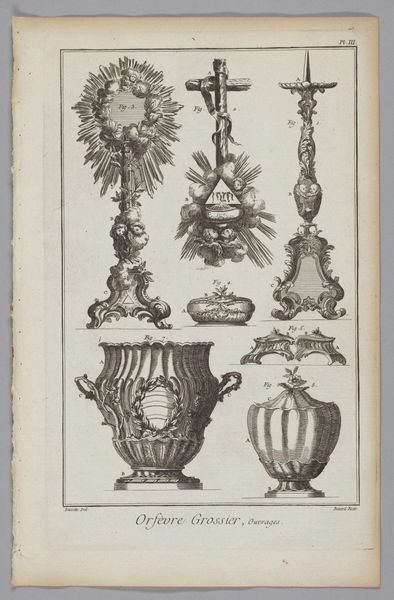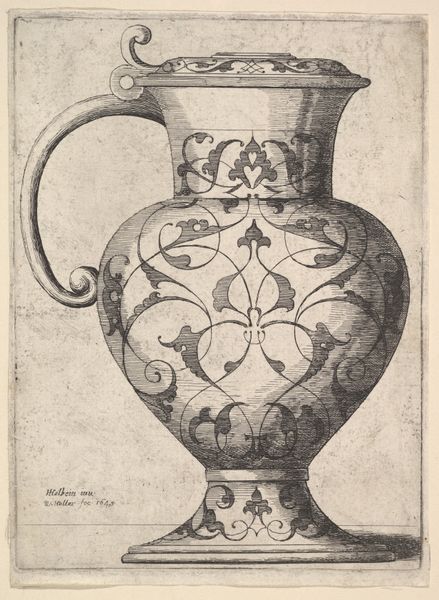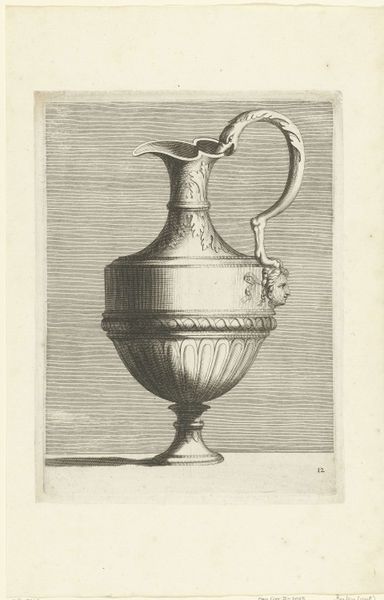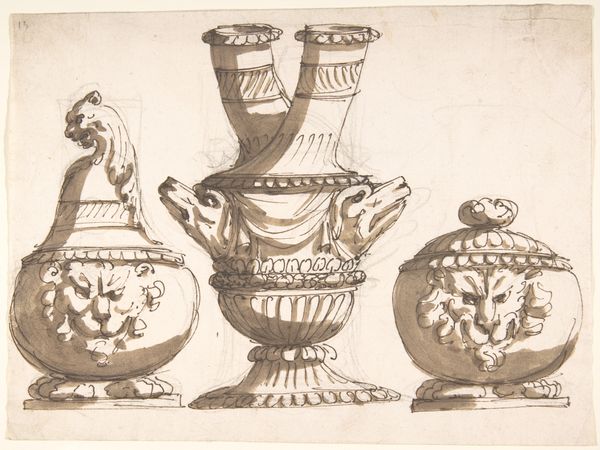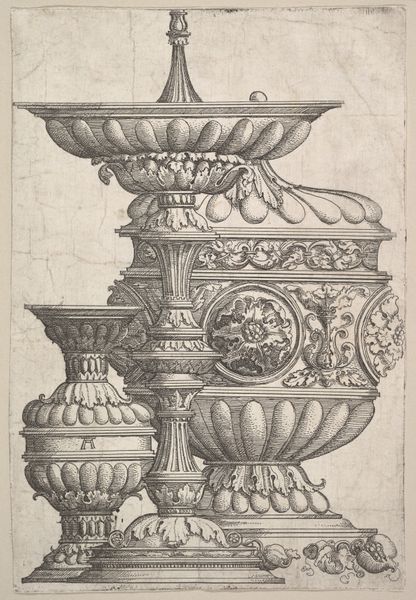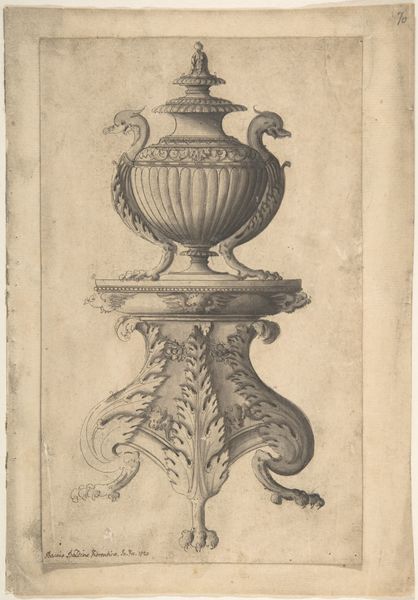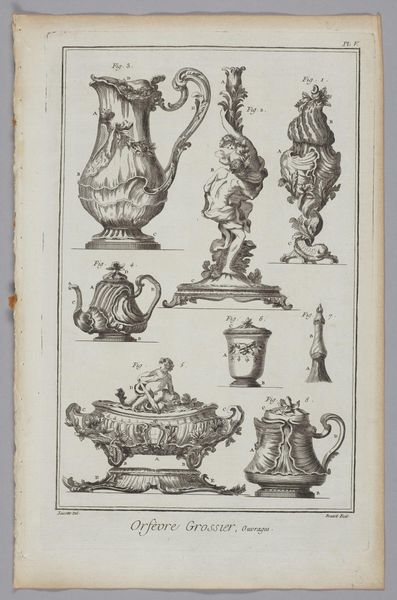
Design for Shallow Two Handled Dish and Four Perfume Bottles 1500 - 1583
0:00
0:00
drawing, print, ink, pencil
#
drawing
# print
#
form
#
11_renaissance
#
ink
#
pencil
Dimensions: 16 7/16 x 11 1/4 in. (41.7 x 28.6 cm)
Copyright: Public Domain
Curator: Oh, I'm immediately drawn in. It's like stepping into a fragrant, imagined Renaissance workshop! Such elegant potential rendered in soft shades. Editor: Indeed. What we're observing is "Design for Shallow Two Handled Dish and Four Perfume Bottles," an ink, pencil, and wash drawing on paper by Erasmus Hornick, likely created between 1500 and 1583. The designs themselves offer a window into the artistic and social life of the Renaissance. Curator: Renaissance chic, distilled. Those perfume bottles! Each one feels so distinctive, almost characters in a silent play. You can almost smell the concoctions they'd hold – myrrh and ambergris, perhaps. I see that Hornick even notates two of the bottles. Did this work serve some grand purpose beyond just eye-catching aesthetics? Editor: Undoubtedly. Hornick was an important goldsmith and printmaker, so designs like this would have been patterns for other artisans. They reveal a sophisticated market eager for luxury items – objects that performed refinement, wealth, and perhaps even an aura of mystery. I find it remarkable how detailed this sketch is, considering its intended function as a template for future objects. Curator: He’s conjuring the very essence of the vessels! Not just what they look like, but almost their potential energy. It’s interesting how the print itself becomes an object of beauty. How did designs like this shape the field, and impact design production in society, though? Editor: Drawings and prints such as Hornick’s filled pattern books that circulated among workshops across Europe, informing a shared visual language, influencing trends in ornamentation, and even affecting diplomatic exchanges and competition. Prints made luxury designs accessible across great distances, facilitating artistic cross-pollination. Curator: That makes me look at it so differently. Each of those delicate lines, multiplied and mirrored across workshops, and societies, a whispering influence shaping taste! The objects he renders probably sparked just fleeting pleasure or personal vanity, while the sketch had an influence, a voice, of its own! It's wonderful that it's here for us to appreciate today, to recognize a lasting imprint through form. Editor: Yes, it invites us to consider the complex, interwoven threads of art, commerce, and social status in Renaissance culture, and it reminds us of how drawings operate both as utilitarian templates, but can transcend beyond design itself, with lasting social reverberations.
Comments
No comments
Be the first to comment and join the conversation on the ultimate creative platform.
